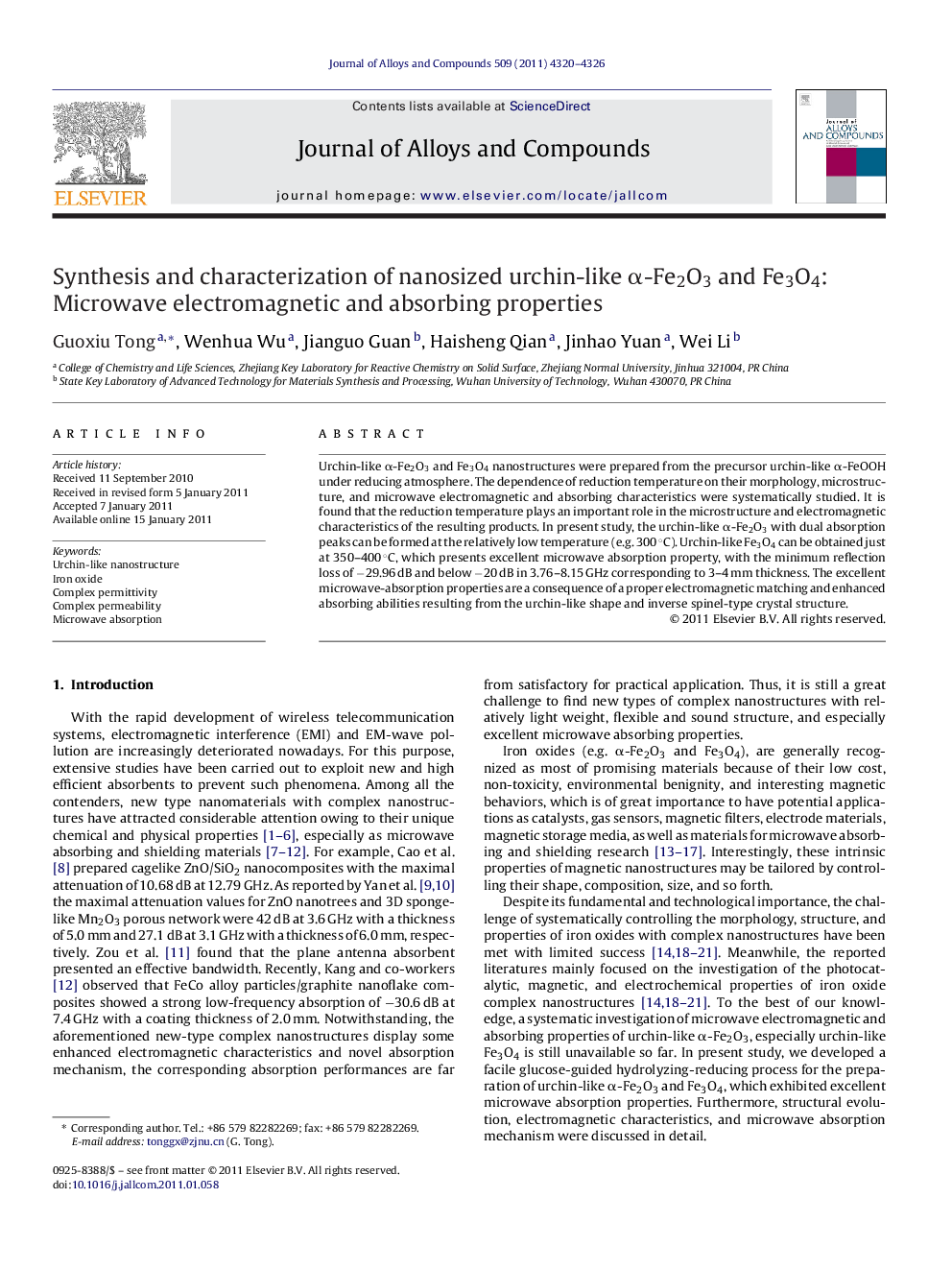| Article ID | Journal | Published Year | Pages | File Type |
|---|---|---|---|---|
| 1617424 | Journal of Alloys and Compounds | 2011 | 7 Pages |
Urchin-like α-Fe2O3 and Fe3O4 nanostructures were prepared from the precursor urchin-like α-FeOOH under reducing atmosphere. The dependence of reduction temperature on their morphology, microstructure, and microwave electromagnetic and absorbing characteristics were systematically studied. It is found that the reduction temperature plays an important role in the microstructure and electromagnetic characteristics of the resulting products. In present study, the urchin-like α-Fe2O3 with dual absorption peaks can be formed at the relatively low temperature (e.g. 300 °C). Urchin-like Fe3O4 can be obtained just at 350–400 °C, which presents excellent microwave absorption property, with the minimum reflection loss of −29.96 dB and below −20 dB in 3.76–8.15 GHz corresponding to 3–4 mm thickness. The excellent microwave-absorption properties are a consequence of a proper electromagnetic matching and enhanced absorbing abilities resulting from the urchin-like shape and inverse spinel-type crystal structure.
Graphical abstractUrchin-like α-Fe2O3 and Fe3O4 with excellent microwave absorbing characteristics were selectively synthesized by a facile glucose-guided hydrolyzing-reducing approach at different reducing temperatures.Figure optionsDownload full-size imageDownload as PowerPoint slideResearch highlights▶ The morphology and microstructure evolution of urchin-like FeOOH with reducing temperature. ▶ The analysis of the microwave electromagnetic characteristics of urchin-like α-Fe2O3 and Fe3O4. ▶ The investigation of the absorption mechanism of urchin-like α-Fe2O3 and Fe3O4.
